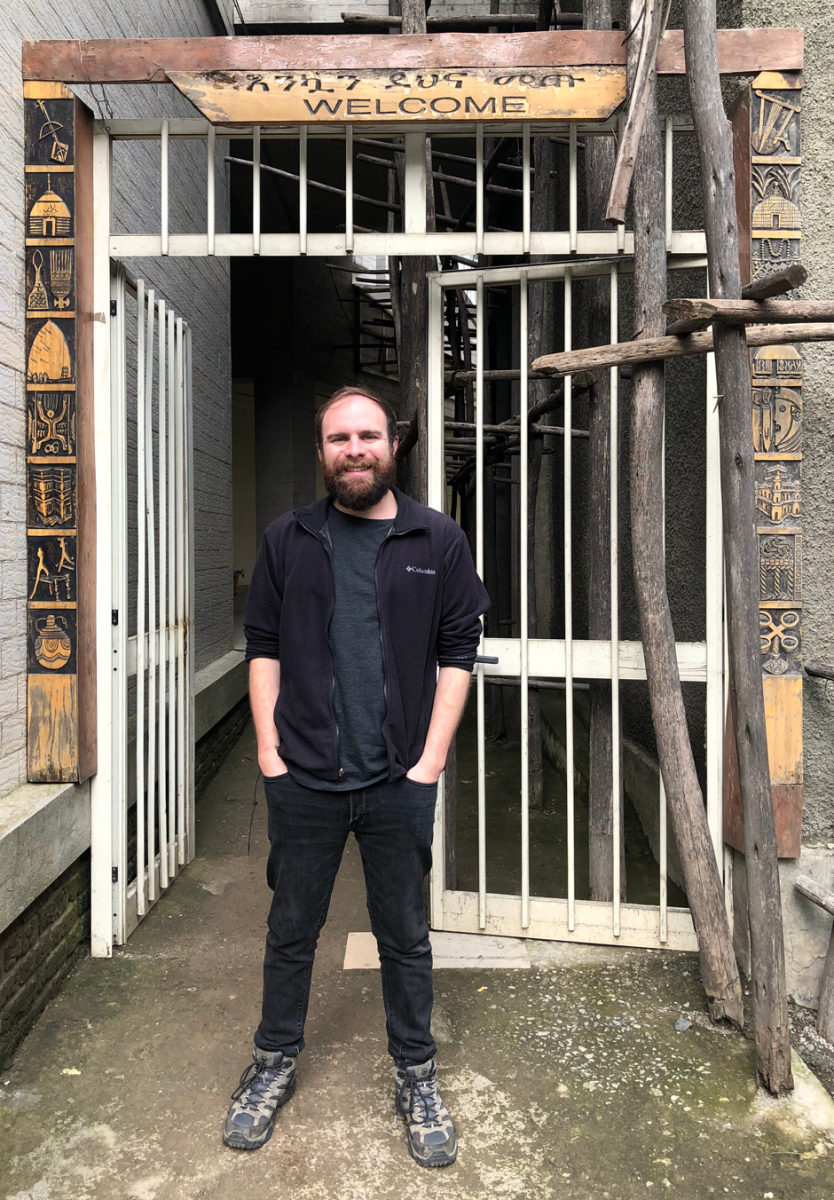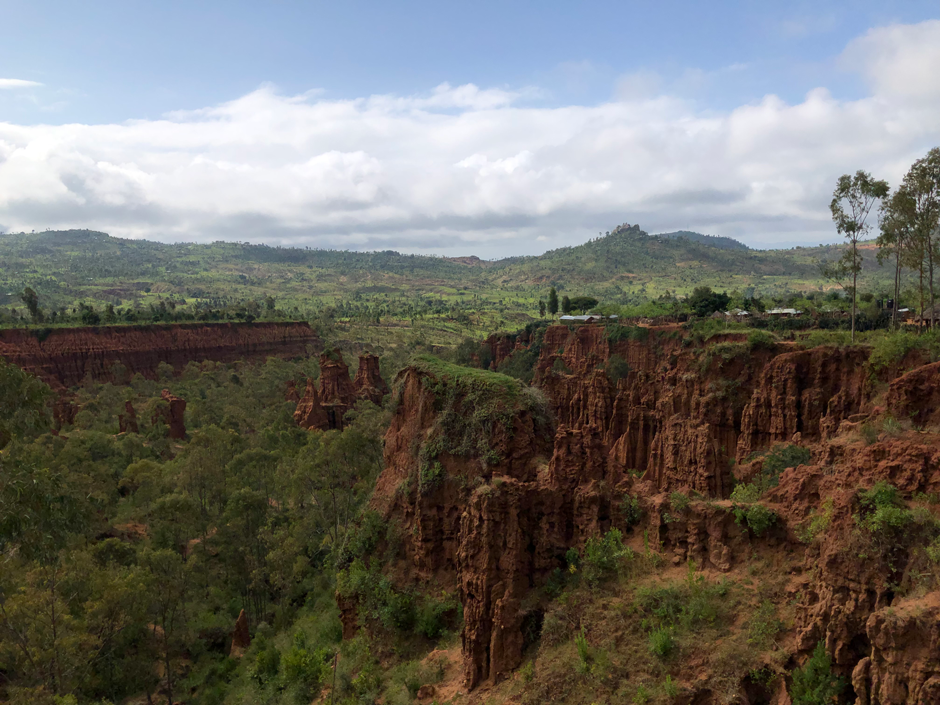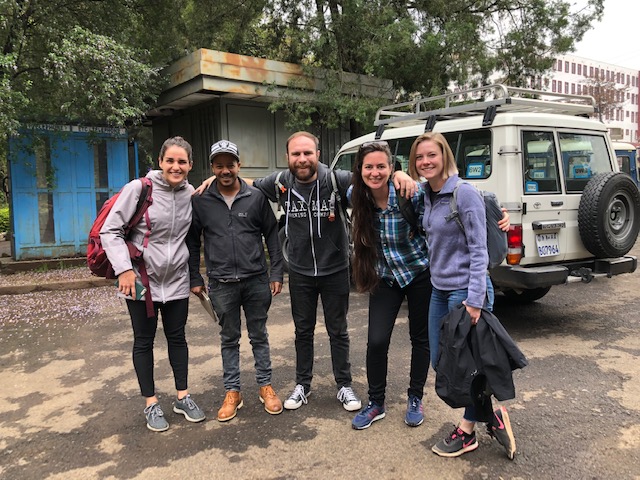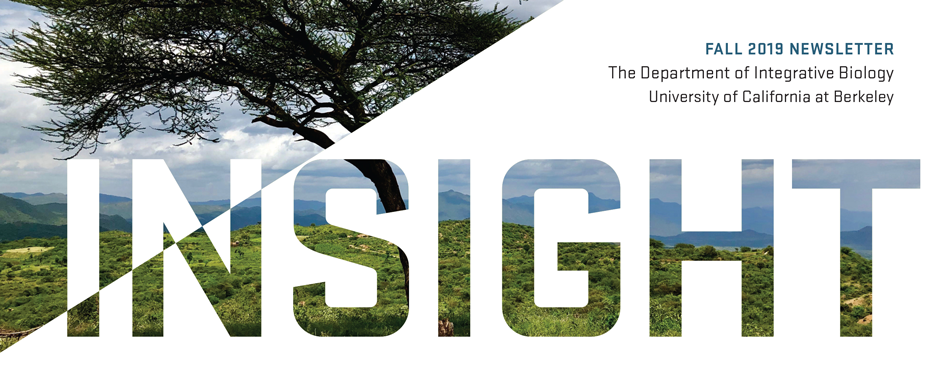 |
|
Ryan Yohler at the National Museum of Ethiopia |
This summer, six people from UC Berkeley's Human Evolution Research Center (HERC) traveled to Addis Ababa, Ethiopia to conduct research on the rare and evolutionarily important fossils housed in the National Museum of Ethiopia. These include fossils of hominids — a group that includes humans and our early ancestors — and other primates. The museum is also home to "Lucy" and "Ardi," famous skeletons that have illuminated our evolutionary history. Ryan Yohler, a second-year IB PhD student, got a chance to examine "Lucy" during the trip.
It was kind of mind-boggling,” Yohler says. “It’s always been something that I've read about and really cared about … It was a dream, honestly, just being able to look at these [fossils] and hold [them].”
Yohler, who is co-advised by IB Professors Leslea Hlusko and Tim White, spent two months in Ethiopia — a month longer than the rest of the group, which included several other graduate students. Their primary goal was to examine and describe a collection of over 1,000 monkey fossils that Hlusko and her graduate students at the time, Marianne Brasil (also an IB undergrad alumna) and Tesla Monson, had started organizing two years ago. The fossils were originally discovered as part of the Middle Awash research project, a decades-old international collaboration centered in Ethiopia and at HERC at UC Berkeley.
Yohler explains that these monkey fossils are important because there are very few others known from the Late Pleistocene of Africa. Additionally, the fossils come from one region, but two distinct time points — separated by around 100,000 years — allowing scientists to directly compare changes in the fauna and environment over time.
Yohler worked with fellow graduate student Catherine Taylor to examine the monkey postcrania — the bones below the skull — for signs of whether they lived mainly in trees or on land. Others in the group focused on classifying the monkeys by their skulls and teeth. In addition to primates, Yohler also examined fossils of small mammals such as rats and bats “in hopes that any environmental change that we see, or any change in fauna, will be represented in separate species lineages of animals ranging from shrews to elephants.” According to Yohler, early results indicate that there was a shift in the types of monkeys present between these two time periods. Yohler says that the lab expects to publish four papers as a result of this one summer trip.
 |
IB graduate students Ryan Yohler, Cat Taylor, and Marianne Brasil examining fossils in Ethiopia |
In another project, Yohler made three-dimensional scans of some of the museum’s valuable hominid fossils, which is how he got a chance to see (but not scan) “Lucy”. When asked why it was important to go to Ethiopia to view these fossils in person, Yohler said that “It's almost impossible to fully appreciate what you have unless you go. The future of paleontology is obviously 3D scans and being able to work with specimens while you're not physically with them, but somebody has to still go and 3D scan them. Looking at something on the computer and in person is very different — you can’t really see from a scan how the process of fossilization may have deformed it, where there is sediment adhering, et cetera. Scans are great, but they can’t replace the information embedded in the actual fossil.”
One of the reasons Yohler stayed longer than the others was to gain additional experience working in the museum, since his undergraduate and master’s training was in geology. He notes that the National Museum of Ethiopia is a remarkable place for paleontology training and research, given the vast and unique collection of fossils.
“I'm very appreciative of all the work that the Middle Awash team has done and of the Ethiopian government [for] allowing us to have a safe space to curate and study their antiquities. The facilities are great for managing [these] fossils,” he says. He adds that there are many researchers from Ethiopia and all over the world collaborating at the museum, which was valuable for his education.
Yohler says the Hlusko lab hopes to return to Ethiopia this winter or next summer, so they can characterize another large group of monkey fossils from an older period. Describing these collections is just the first step, and it can lead to many new scientific questions. “Wherever my research takes me … or anybody else [in the lab], we will probably be going back,” he says.
 |
|
New York, in Gesergio near the Konso village of Ethiopia |
 |
|
Left to right: Marianne Brasil, Wegen (from the Middle Awash project), Ryan Yohler, Tesla Monson, and Cat Taylor |
Back to Main Fall 2019 Newsletter Page







